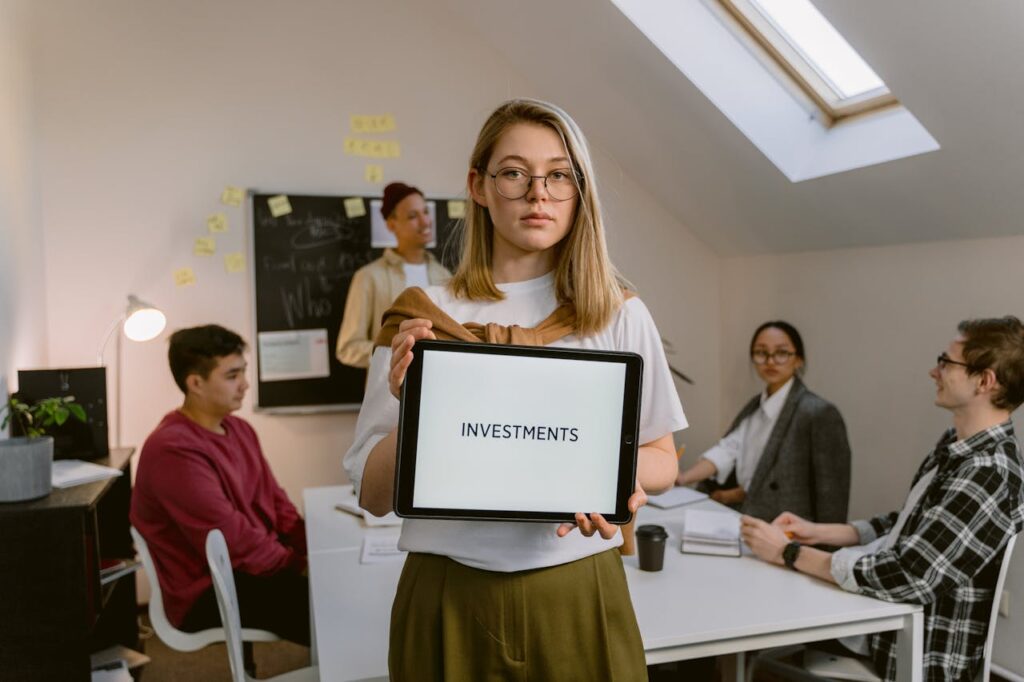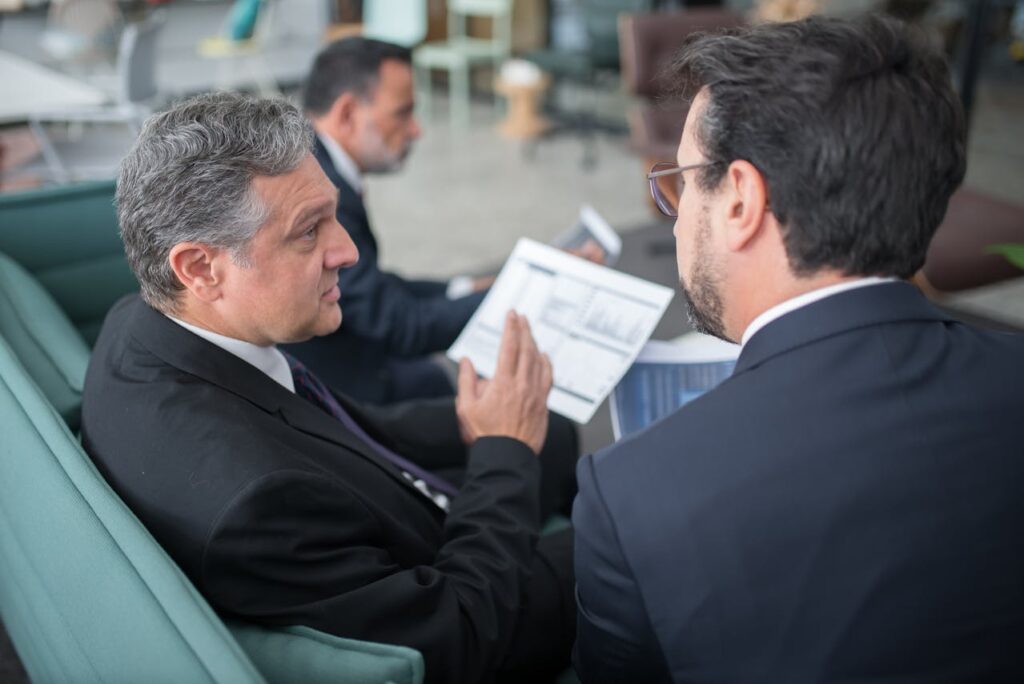Raising a round is just the start. Once the money lands, the real work begins—and so does the quiet judgment.
Your first 100 days after a fundraise set the tone for everything that follows. Investors are watching. Not just for results, but for rhythm. For decisions. For the way you move.
They don’t expect you to scale overnight. But they are looking for signs that you’re leading with clarity. That you know what matters most. That you’re building something with purpose, not panic.
At Tran.vc, we help founders build momentum before they raise. But we also care what happens after. Because how you start—right after that first check—can shape how every future round goes.
This guide will walk you through what VCs really look for in those early days. What makes them lean in further—or quietly step back. And how you can turn your first 100 days into a foundation no one wants to bet against.
Let’s dive in.
The Quiet Period That Says Everything
The First 100 Days Aren’t About Outcomes—They’re About Signals

Investors know the first few months post-raise aren’t for results. They don’t expect explosive growth or perfect metrics. What they’re watching for is how you think. How you move. What you do when the clock starts ticking and the room gets quiet.
This is when your habits become culture. When your priorities start to reveal whether the raise was a signal of what’s to come—or just a one-time win.
VCs don’t need daily updates. But they are watching for movement. Are you sending updates? Are you building with urgency? Are you protecting runway or burning it with vague hires and fuzzy goals?
It’s not pressure—it’s pattern recognition. The best VCs have seen dozens of companies flounder right after the money hits. And they’ve also seen the ones that get sharper, faster, and more focused.
Which one are you becoming?
This Isn’t About Pleasing—It’s About Proving
Some founders try to spend the first 100 days making investors feel good. Lots of meetings. Long updates. Slides about “vision.”
But that’s not what VCs need. They don’t want fluff. They want clarity. They want to know: are you doing the things you said you’d do? Are you keeping the main thing the main thing?
They’re not looking for progress in every direction. They’re looking for precision. For thoughtful moves that de-risk the company—not distract from it.
When they see that kind of leadership, they double down. Not just with money, but with time. With intros. With belief.
But when they see chaos, or stalling, or silence—they pull back. Slowly. Quietly. And you may not even realize it’s happening until the next round feels harder than it should.
The 100-Day Window Is When Discipline Shows
Momentum Gets Judged in Small Moves
You don’t need a product launch to prove you’re moving. What investors want is motion with meaning. Are you hiring with intention? Running tight user interviews? Locking in early pilots or shaping a clear IP strategy?
These don’t need to be loud moves. But they need to show progress. Real, observable steps that match the story you told in the raise.
Even something as simple as a detailed update on patent filings, pilot design, or architecture trade-offs tells investors that you’re thinking sharply.
It says: we didn’t pause to celebrate the round—we accelerated.
And that’s what makes them believe in your next round, before you even ask.
Discipline Looks Like Focus, Not Frugality
Discipline doesn’t mean spending as little as possible. It means spending on the right things at the right time.
Hiring a senior engineer to unblock a roadmap bottleneck? Smart. Hiring a brand team when you don’t have a working prototype? That raises eyebrows.
Founders who show discipline early signal that they know how to lead. Not just technically, but operationally.
They manage their time, their team, and their runway with care. And they don’t confuse movement with momentum. Every week, they ask: what matters most right now?
This is what builds trust. And trust becomes the fuel for everything that follows.
Earning Credibility Before Results
VCs Don’t Expect Certainty—They Expect Honesty
In your first 100 days, things will change. Roadmaps will shift. Assumptions will break. You’ll rethink parts of the plan you raised on. That’s normal.
What matters isn’t whether everything goes perfectly. What matters is how you handle the imperfections.
Investors aren’t looking for founders who pretend everything’s on track. They’re looking for ones who stay transparent—about what’s working, what’s not, and what decisions you’re making as a result.
That kind of clarity builds trust. If you can say, “we’re pivoting this piece of the stack based on feedback from two key partners,” that doesn’t make you look uncertain—it makes you look smart.
The worst mistake founders make is going quiet when the story changes. Investors don’t punish transparency. They punish confusion.
And if you can share your thinking before you’re asked, that’s even better.
Consistent Communication Is a Leadership Trait
Your first investor update isn’t about impressing anyone. It’s about establishing rhythm.
Founders who send timely, useful updates signal that they’re building a culture of visibility. That they’re running the company with structure—even if the product is still early.
These updates don’t need to be fancy. But they do need to be clear. What changed? What moved? What’s next?
When you send this kind of signal every few weeks, you don’t just look like a founder—they start seeing you as a CEO.
That shift matters. It makes it easier for them to imagine you leading future rounds, hiring a great team, sitting across from top-tier Series A firms. Because leadership isn’t a trait you describe—it’s one you show.
And the first 100 days is your best window to show it.
Set the Right Goals—and Share the Right Progress
Early Wins Should Be Strategic, Not Cosmetic

You don’t need to hit a million users in your first three months. But you do need to hit something.
Founders who choose the right early goals—ones that reduce risk, open up the market, or validate a core insight—send a signal that they understand the game.
Maybe that means getting a prototype into one pilot environment. Or locking in a provisional patent that protects your edge. Or refining your user targeting based on live feedback.
These steps might seem small. But if they’re aligned with your long-term strategy, they carry weight.
Investors don’t need scale yet. But they need to see you’re making the future feel closer—and more believable—with every move you make.
Momentum Is Easier to Keep Than Create
Once your round closes, it’s tempting to catch your breath. And you should—briefly.
But founders who go quiet for too long often struggle to get back up to speed. They lose momentum. They start reacting instead of leading. And that drift becomes obvious fast.
The smartest founders stay in motion. Not wildly, but with purpose.
They stack small wins. They build habits. They show their team, their board, and themselves that the company didn’t peak at the raise—it started there.
That mindset alone can separate you from 80% of your peers.
Laying a Foundation Investors Can Trust
Build a Company, Not Just a Product
In your first 100 days, it’s easy to pour all your attention into the product. And yes—building matters. But what VCs really want to see is whether you’re starting to build a company.
That means your decisions go beyond code. You’re thinking about the kind of culture you’re shaping. The systems you’re putting in place. How you communicate. How you track learning. How you make hard choices with limited information.
Even if you’re still a small team, investors notice when you act like a builder and a leader—not just an engineer who happens to be fundraising.
They watch how you hire. Who you trust. What you delegate. If you’re hiring slowly and intentionally, and giving early teammates the tools to own their lane, that creates confidence.
You don’t need to look like a Series A company. But you do need to show that you’re not just sprinting—you’re designing something that will last.
The Best Founders Add Structure Without Adding Weight
What scares investors isn’t early messiness—it’s unmanaged messiness.
You can be rough around the edges in month three. But if there are no systems at all—no weekly plan, no accountability, no priorities—they start to wonder how you’ll handle real complexity later.
So in these first 100 days, what you’re really doing is creating shape.
That doesn’t mean corporate overhead. It means rhythm. A clear cadence of decision-making. Thoughtful rituals around planning, testing, and feedback. A habit of reflecting before reacting.
Maybe that looks like a shared doc for weekly goals. Or a short Friday check-in where your team surfaces blockers. Or a lightweight roadmap review every two weeks.
These aren’t just for your team. They’re for you.
Because founders who move fast and stay aligned are rare. When investors see that you’re one of them, they don’t just fund this round—they start picturing you as the one they’ll back again.
Focus Is Your Most Visible Advantage
Nothing worries an investor more than a founder who keeps shifting priorities.
In your first 100 days, one of the biggest value signals you can send is focus. Not just in your pitch, but in your actions.
Every week, your work should point toward one or two clear goals. Not five. Not twelve. Just the few that matter most.
That might mean finishing your pilot version instead of testing three different features. Or going deep with five design partners instead of marketing to fifty possible buyers.
When investors see that kind of precision, they don’t think small—they think sharp.
They start to believe that you’ll move faster, hire better, and avoid the waste that drags other companies down.
Focus builds momentum. And momentum—especially when visible—builds belief.
Founders Set the Tone for the Future
Everything you do in the first 100 days becomes part of your company’s culture.
The way you make decisions. The way you talk about the mission. The way you deal with mistakes.
Your team is watching. So are your early investors.
They’re learning how you operate. How you think. Whether you take ownership or dodge responsibility. Whether you move with urgency or get caught in overthinking.
Even your silence says something.
Are you proactively sharing updates? Or do they have to chase you? Are you transparent when things shift—or do you wait until the narrative is clean?
Founders often underestimate how much these small behaviors shape investor confidence.
But this is when those impressions form. And the ones who earn long-term trust are the ones who lead—not just with vision, but with clarity and consistency.
Shape the Next Raise Without Selling It
Most founders don’t start thinking about their next round until the current one’s running out.
But great founders start shaping the next raise immediately after the first one closes—not by pitching it, but by earning it.
They set clear milestones: product, distribution, proof of value. They stay in light touch with future investors—sharing progress, asking smart questions, surfacing interest over time.
By the time they open the next round, there’s no scramble. The story’s been growing in the background. The numbers are supported by narrative. And the relationships are already warm.
That kind of maturity is rare in pre-seed and seed-stage companies. But when investors see it, they move faster. Because the raise feels less like a pitch and more like an invitation to something they already believe in.
Your first 100 days is where that next raise begins. Whether you realize it or not.
Turning 100 Days into Lasting Momentum
The Best Founders Don’t Chase Growth—They Build It with Intention

Once your first raise closes, it’s easy to feel like everything needs to scale fast. But real momentum comes from building with intention. Every move, every hire, every commit—done with a clear sense of why it matters and where it leads.
In your first 100 days, that means building depth before speed. It means understanding your user better than anyone else. Refining your product until it solves one problem deeply. Making sure your early technical decisions set you up to move fast later—not trap you in rework.
Investors pay close attention to this. Because a founder who starts with care is more likely to scale with confidence.
You don’t need to move loudly. But you do need to move with clarity.
And if you do that well, you’ll start to build something that feels inevitable. Something others want to support—not because you’re loud, but because you’re clearly going somewhere real.
Keep Raising Without “Raising”
The founders who raise their next round fastest are often the ones who never officially start raising.
Why? Because they’re always showing momentum. They’re always communicating. They’re always sending soft signals that progress is happening—even if they’re not asking for money yet.
That could mean sending a short quarterly update to a few potential investors. Or sharing pilot results. Or updating a contact when you file your first patent.
These signals compound. They create curiosity. And by the time you’re ready to open your next round, you’re not starting from zero—you’re starting with attention.
That’s what the first 100 days are really about. Not just execution, but direction. Not just progress, but signal.
And the founders who understand that are often the ones who get to choose their investors—not chase them.
Tran.vc Helps You Start Strong—Before Day One
At Tran.vc, we don’t just care about what happens after you raise. We care about how you get there.
We invest up to $50,000 in in-kind IP and patenting support—because we know the first signal most founders need is clarity and protection around what they’re building.
That kind of foundation is rare. And it changes everything.
It makes your story sharper. Your moat stronger. Your confidence higher. And your raise more believable.
But we don’t stop at IP. We work with you on how to move, how to focus, how to communicate in a way that builds trust from day one. Because we’ve seen what happens when early momentum compounds. It doesn’t just help your next raise—it helps you build the kind of company that lasts.
Show Investors You Can Handle Complexity Without Creating Chaos
Deep Tech Moves Slowly—So Your Execution Must Be Sharp
If you’re building in AI, robotics, infrastructure, or any other deep tech space, investors already know the timeline is longer. They know the product won’t go viral overnight. They’re not expecting instant traction.
But what they are watching for is how you manage complexity.
The first 100 days are when they learn whether you’re the kind of founder who can keep the signal clear when the stack is hard, the team is small, and every day brings new friction.
They want to see: can you set priorities even when the tech is unfinished? Can you lead a team through ambiguity? Can you manage trade-offs without burning through time, capital, or trust?
This is where technical founders often lose momentum. They think being busy is the same as being effective. But it’s not.
What VCs respect is clarity in the chaos. Knowing what not to build. Saying no to scope creep. Making one big decision instead of five small ones that confuse the roadmap.
That kind of clarity is rare in early-stage deep tech. But when it shows up, investors notice. Because they’ve seen what happens when it doesn’t.
And founders who bring that kind of leadership early often earn the chance to keep leading later.
Operational Maturity Is the Shortcut to Trust
You don’t need a COO. You don’t need a 20-slide business plan. But you do need to act like you understand the game you’re playing.
That means understanding your own runway without being told. It means building in public when it makes sense—and staying heads-down when it doesn’t.
It means managing meetings with purpose. Keeping your early team aligned. Reporting on progress with numbers that actually mean something.
This kind of operational maturity doesn’t just make the work better. It makes the company feel more fundable.
Because when investors see you operate like someone who’s scaling, even before you grow, it changes how they think about what you’re building.
You’re not just a project anymore. You’re a business in motion.
And in early-stage VC, that perception shift can mean everything.
Be the Founder Who Learns Fast—Not Just the One Who Works Hard
Feedback Loops Are Your Most Valuable Asset

Startups move fast. But smart startups learn faster.
In your first 100 days, investors aren’t measuring how much you do—they’re measuring how fast you adapt.
Are you shipping something every week, even if it’s rough? Are you talking to users instead of guessing? Are you refining your plan based on reality—not just clinging to the pitch deck you closed on?
This kind of responsiveness builds confidence. Because it tells investors you’re not stuck. You’re moving with the market.
You’re not afraid to update your thinking when new data comes in. And you’re not married to ego—you’re married to progress.
That’s what VCs want. Not founders who know everything, but founders who notice everything. Who see signals early. Who test, reflect, decide, and repeat.
That loop is what makes you sharp. And sharp founders get funded more than loud ones.
Lead with Curiosity, Not Just Conviction
Investors love conviction. But what they really trust is a founder who knows when to hold tight and when to explore.
If you’re stuck in one idea too long, they worry. If you chase every new input, they worry too.
The balance comes from a kind of grounded curiosity. A sense that you believe deeply in your vision—but you’re still open, still questioning, still optimizing.
That mindset shows maturity. And it shows that your company isn’t built on hope—it’s built on learning.
In the first 100 days, nothing builds investor trust faster than that.
Final Thoughts: Make Your First 100 Days Count
Your first 100 days aren’t about fireworks. They’re about foundation.
They’re about rhythm, not headlines. About decisions, not noise. About being the kind of founder people want to bet on again—not just because of what you built, but because of how you build.
Investors are watching. Not to judge. But to learn.
To see who you are when the money clears and the real work begins.
And if you lead with intention, move with focus, and communicate with clarity—those early days will pay off for years to come.
At Tran.vc, we’re here to help you start strong. Apply anytime at https://www.tran.vc/apply-now-form, and let’s build the kind of momentum that doesn’t stop after the raise—it starts there.
